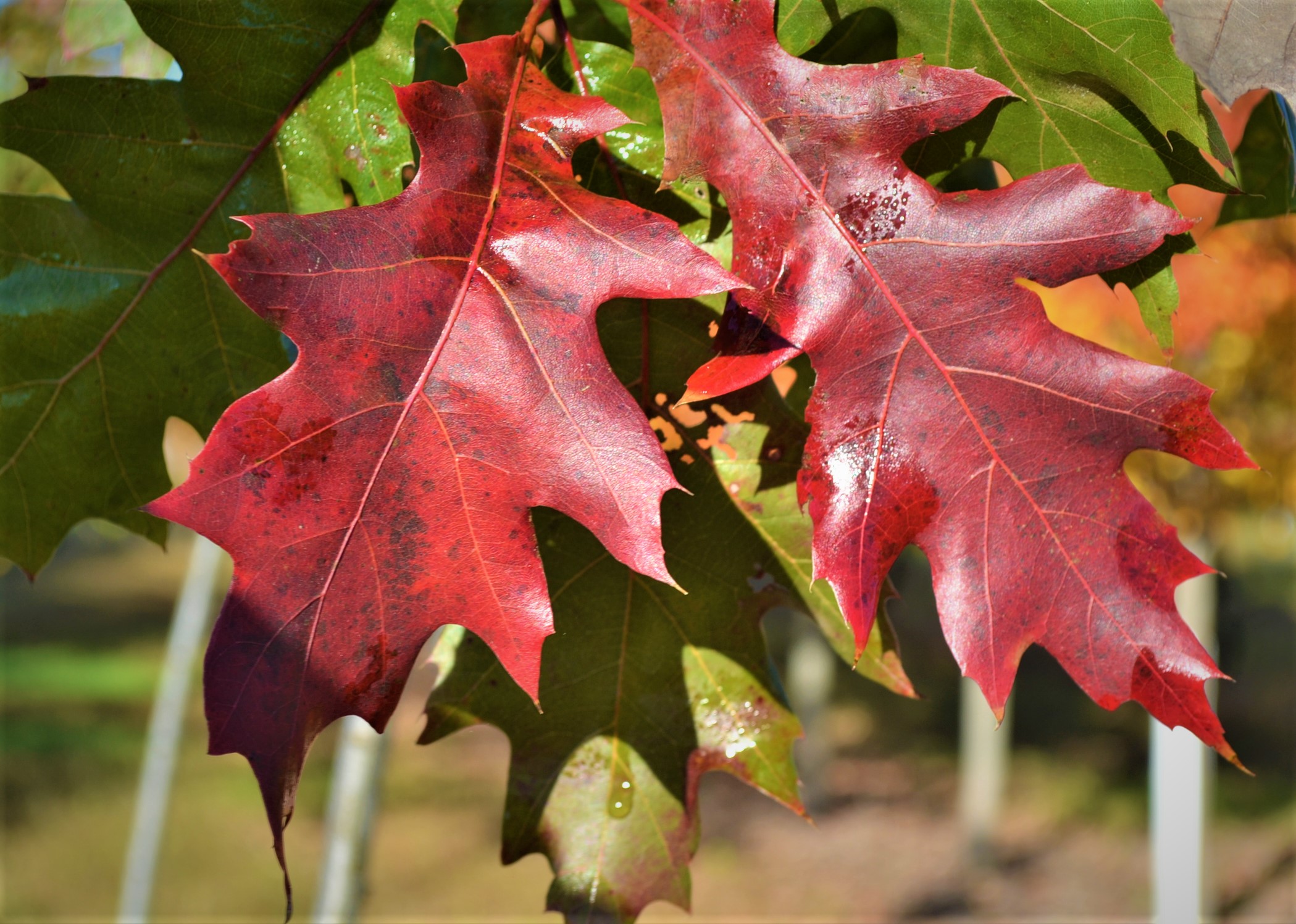One of the most spectacular sights of autumn is the foliage transformation of red oak trees. These iconic trees put on a showstopping display of bright red leaves that light up landscapes across North America. In this article, we’ll dive into the details of red oak leaves in the fall – why they turn so vibrantly red and how to enjoy their full autumn splendor.
All About Red Oaks
Red oak trees belong to the genus Quercus and are native to North America. The most common species grown are northern red oaks (Quercus rubra) pin oaks (Quercus palustris) and scarlet oaks (Quercus coccinea).
Red oaks thrive in USDA hardiness zones 3-9 depending on the variety. They can reach mature heights between 40 to 80 feet. These trees prefer full sun exposure and mildly acidic well-draining soil. Red oaks grow at a moderate pace and can live 100 years or more.
The leaves of red oak trees emerge pinkish in spring then transition to a lustrous green. They are 5 to 9 inches long with bristle-tipped lobes. The leaves remain green throughout summer into early fall.
Why Red Oak Leaves Turn So Vibrant in Fall
When autumn arrives, the green chlorophyll in the red oak leaves begins to break down, allowing other pigments present in the leaves to shine through. Red oaks contain high levels of anthocyanins – pigments that produce vivid red hues.
Cooler fall temperatures signal the leaves to stop producing chlorophyll. Sunlight and sugars trapped in the leaves interact with the anthocyanins and create the signature glowing red foliage.
Weather conditions impact the saturation of red. Lots of sunny fall days and cool, crisp nights (but not freezing) create ideal conditions for the most breathtaking color. Rainy or warm weather can dull the red pigments.
The Transformative Process
The fall foliage transition on a red oak begins with a few leaves transforming yellow or orange in late September or October. This signals the start of the chlorophyll dissipating.
Over the next few weeks, more and more leaves shift to shades of red. It begins with a brick red, intensifying to a bright cherry red. Some leaves may develop a deep burgundy hue. This spectacle lasts until late October or November.
A red oak in its full autumn glory is a remarkable sight. The red foliage combined with the sprawling branching form make it a star of the fall landscape. Eventually the red leaves will brown, dry out, and drop to the ground.
Maximizing Red Foliage
To get the most vivid red leaf display from your red oak trees, follow these tips:
- Plant in full sun to maximize anthocyanin production
- Provide consistent moisture, especially leading up to fall
- Mulch around the root zone to retain soil moisture
- Apply a balanced fertilizer in early spring
- Avoid pruning in fall to preserve leaves
- Select varieties known for their red fall color like pin oak
With the right growing conditions, you’ll be rewarded with stunning red oak foliage in autumn. Monitor weather forecasts and be ready for the big color show!
Capturing the Changing Leaves
Be sure to photograph the progressive fall foliage spectacle on your red oaks. Here are some tips for capturing brilliant images:
- Shoot on bright, sunny days to illuminate the red leaves
- Move around the tree and shoot from all angles
- Try backlighting for dramatic effects
- Include the full tree form as well as close-ups of branches
- Capture images as the red deepens for a color timeline
- Add the blue sky as a contrasting backdrop
- Focus on a single leaf against a blurred background
You’ll get some amazing photos to share by observing the color changes through fall. And don’t forget to look for the tree’s acorns caps covering the ground below as well.
Using Red Oaks in Landscape Design
Red oak trees lend year-round interest, but they especially shine as specimen trees or for backgrounds in landscape beds in autumn. Consider using them:
- As a standout focal point in the yard
- Behind shorter plants and shrubs to showcase red foliage
- Lining a driveway or property boundary
- Planted in groupings for a colorful grove effect
- Allowed to naturally grow into their widespreading form
Pair red oaks with evergreens like pines or deep purple mums and kale for striking color contrast. Or team them with shrubs like hydrangea that also change color in fall.
Appreciating the Changing Season
The blazing reds of oak leaves are a harbinger of autumn’s arrival across much of the country. Take time to appreciate the transformation of your red oaks. Their fall foliage provides one of nature’s greatest shows.
As winter approaches, the fiery colors give way to bare branches. But take heart, because when spring returns, fresh new oak leaves in vibrant greens will emerge once again, completing nature’s endless cycle.
Why do live oak leaves fall in Spring?
FAQ
What does a red oak look like in the fall?
What kind of oak tree has red leaves in the fall?
Do red oak trees lose their leaves in winter?
Why are the brown leaves on my oak tree not falling off?
- A Complete Guide to Caring for Yuki Cherry Blossom Shrub - January 23, 2025
- Identifying Red Hot Poker Seeds: What to Look For When Harvesting Torch Lily Pods - January 23, 2025
- A Complete Guide to Harvesting Evening Primrose Seeds - January 23, 2025

